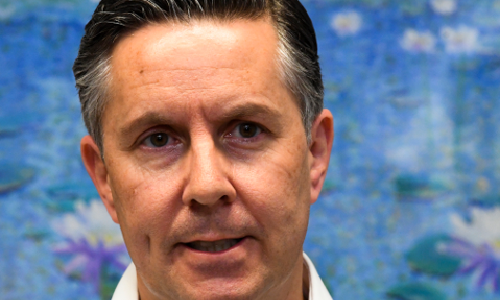In 2023, how is it that an ear infection could make it less likely for a kid to finish school or find a job?
A message from Mark Butler, the Minister for Health and Aged Care, Australian Government.
That’s the reality for many Aboriginal and Torres Strait Islander kids in remote areas with a middle ear infection, too often meaning the difference between finishing school and long-term unemployment.
Despite the best efforts of their parents, Indigenous kids are three and a half times more likely to get these ear infections, than non-Indigenous kids.
The reasons are many, but they include a lack of access to clean running water, along with an absence of culturally appropriate ear and hearing services.
Too often, a simple infection leads to hearing loss in one or both ears, kicking off a life trajectory that’s vastly different to other Australian children.
Imagine trying to finish school, after suddenly losing your hearing. How do you confidently go for a job interview, if you’re not sure that you’ll be able to hear the questions?
The statistics are stark: just 2 out of 5 Indigenous Australians complete year 12. That figure is already shockingly low, but among Indigenous Australians with hearing loss it shrinks even further: just 1 in 5 will graduate high school.
And if you can’t finish school, then it’s even harder to find work. Five out of 10 Indigenous Australians are employed but among those with hearing loss that figure shrinks to around 3 in 10.
It is not just a problem of health, it’s a problem of housing, of poverty, of environmental conditions and basic amenities. And, as with so many health indicators, the gap between Indigenous and non-Indigenous kids has not been closing nearly fast enough.
Just 4 of the 19 Closing the Gap targets are on track.
On the 14th of October this year, all Australians will have the opportunity to change that, by voting ‘yes’ to change our Constitution and recognise the place of First Nations Australians with a Voice to Parliament.
The Voice will be a committee of Aboriginal and Torres Strait Islander people who will give advice to governments on how to finally move the dial on closing the gap targets.
As Health Minister, I can’t think of an area of policy where that Voice will be more important and more needed than in health.
With the best of intentions and substantial investment from both sides of the parliament, the current approach simply isn’t working.
But just as a good doctor listens carefully to their patients, a Voice to Parliament involves listening to the voices of Aboriginal and Torres Strait Island people about better ways to make a real difference.
Conversely – when a doctor doesn’t listen it’s pretty hard to get the right diagnosis, and even harder to find the right treatment. Money spent on the wrong prescription is money wasted.
Listening to an Indigenous Voice to Parliament will give us a better insight into how to better spend the hundreds of millions of dollars of taxpayer money that goes into First Nations health.
Politicians don’t know best and so we need to listen to communities to hear their solutions and ensure funding is getting to where it needs to go, so these kids have better outcomes and longer lives.
On the 14th of October, every Australian will get a once in a generation opportunity to come together and break the cycle, making a real difference to the lives of Indigenous Australians.
I’ll be thinking of those kids as I enter the voting booth. I’ll be voting to make a practical difference in their lives. I hope you do the same.
The Prime Minister formally announced the Referendum date for the Australian people to decide whether to recognise First Nations Peoples via a constitutionally enshrined Voice to Parliament. The repercussions of our collective decision on Referendum Day, 14 October 2023 will reverberate for decades to come.

